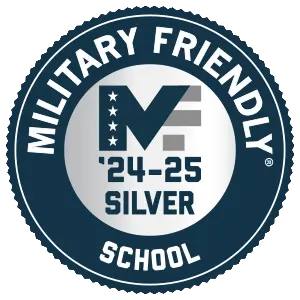The Future of Healthcare: Trends Impacting Practical Nursing and Medical Assisting
 Healthcare is changing for the benefit of patients. Future trends are impacting healthcare and those who administer it. Practical nurses and medical assistants are gaining a helping hand, allowing them to offer better, more accurate, and timely patient care. The future of healthcare is virtual reality, artificial intelligence, telehealth, remote patient monitoring, and cybersecurity.
Healthcare is changing for the benefit of patients. Future trends are impacting healthcare and those who administer it. Practical nurses and medical assistants are gaining a helping hand, allowing them to offer better, more accurate, and timely patient care. The future of healthcare is virtual reality, artificial intelligence, telehealth, remote patient monitoring, and cybersecurity.
What are the Future Trends of Healthcare?
The future is bright, and there are many trends in healthcare that will support medical assistants and practical nurses. They include:
Trend #1: Virtual Reality
We all know by now that advanced virtual reality (VR) tools help neurosurgeons use surgical precision when operating on a patient’s brain. However, you may not know that many medical students utilize virtual reality to learn essential skills and practice tradecraft in a safe environment. Making a medical mistake can be catastrophic, but with the help of virtual reality, students can get immediate feedback about techniques and learn from those mistakes to build their confidence. Students will be ready to become medical practitioners with the help of this future healthcare technology.
Trend #2: Healthcare Artificial Intelligence (AI)
AI is poised to transform patient care and supplement medical professionals in clinical and administrative tasks. Machine learning will use the patient’s vitals, demographics, and other information to make better medical decisions for individual patients and the community. With the help of healthcare AI, we can avert the next pandemic in its early stages.
Another emerging trend in healthcare is natural language processing. This form of artificial intelligence will be an indispensable tool that medical assistants and practical nurses use daily. With an influx of clinical documentation and published research, medical professionals will have assistance in analyzing unstructured clinical notes, preparing reports, and transcribing patient interactions. Speech recognition, text analysis, and translation will increase accuracy and reduce medical errors in the process.
Trend #3: Telehealth
Telehealth has existed since the 50s when patients could talk with their doctors over the phone. Patients could contact medical professionals and get medical advice even in rural areas. Fast-forward to the present, and telehealth has taken on a new definition. With real-time video communications, broadband Internet, and advances in computer technology, nurses can talk to patients over virtual nurse helplines to see what the patient is talking about and offer better advice. Our bodies say as much visually as verbally and having that extra layer of oversite is essential when dealing with medical issues. Medical assistants and nurses can now offer face-to-face consultations and glean the visual clues that were once only possible in person.
Trend #4: Remote Patient Monitoring
Remote patient monitoring takes telehealth to the next level. Healthcare providers can monitor patients outside of hospitals, working alongside bedside nurses who implement the treatments administered by remote doctors. The doctor and nurse can access digital medical devices, weight scales, blood pressure monitors, pulse oximeters, and blood glucose meters. Unlike traditional rounds where a patient only spends a limited amount of time with a physician, a patient will be monitored 24/7 by a physician who has direct contact with patients.
Trend #5: Advanced Electronic Health Records
Deloitte is preparing us for the next generation of electronic health records. By 2030, electronic health records will be more convenient, efficient, and intuitive. The healthcare community is enjoying the initial benefits of digitizing health records. There are fewer resources spent on storing records now housed in the cloud, quick retrieval of records using MySQL databases, and patient access through virtual portals. Moving forward, medical assistants will have an additional outlet to communicate with patients, schedule appointments, complete eCheck-in, and process payments. Patient medical records will also be on demand, allowing the entire healthcare team access to make better decisions and improve healthcare outcomes.
Trend #6: Cybersecurity
Unfortunately, one of the future trends in healthcare is ransomware. A new threat on U.S. soil is “scattered spider.” Scattered Spider is a cybercriminal group that targets large companies like healthcare facilities to steal data and extort money using ransomware. Because of these new threats, medical professionals will need a crash course in cybersecurity during their medical training. It will be incumbent for future medical assistants and LPNs to understand their part in the fight against cyber criminals. Whether opening attachments in emails or using external memory sticks, there will be a new protocol for healthcare facilities that don’t want to become a victim of ransomware.
Want to Learn More?
Want to learn more about the future trends shaping the roles of medical assistants and practical nurses? OBC offers a Medical Assistant and Practical Nursing program that will train you for entry-level positions while integrating the future of healthcare into today’s training.
Medical Assistant Program
OBC’s Medical Assistant diploma program will prepare you for a career working in any medical office or facility. Our school’s caring instructors with real-world experience will teach you the necessary skills to succeed in the medical assisting profession throughout our comprehensive training program. We have smaller class sizes than other schools, which gives you more access to personalized attention from our knowledgeable school instructors.
Practical Nursing Program
The Practical Nursing (PN) Program provided by OBC is 44 weeks or four quarters long. The program covers theory, nursing skills lab, simulation lab, and clinical experiences. Once you graduate from the PN program, you will be fully qualified to write to the NCLEX-PN® to become licensed as an LPN in Ohio.
Contact us today to learn more about our Medical Assistant and LPN programs.

